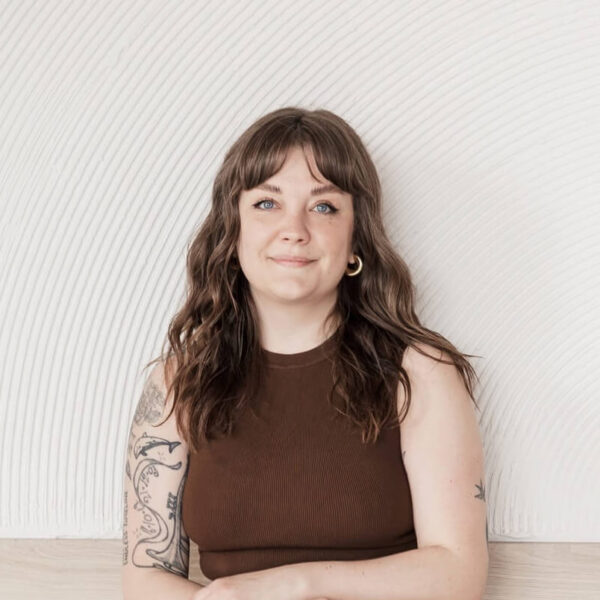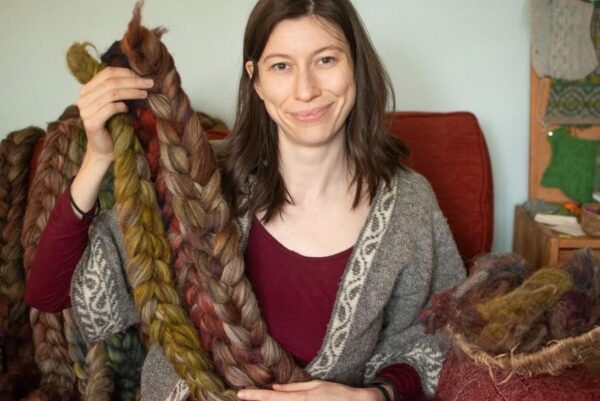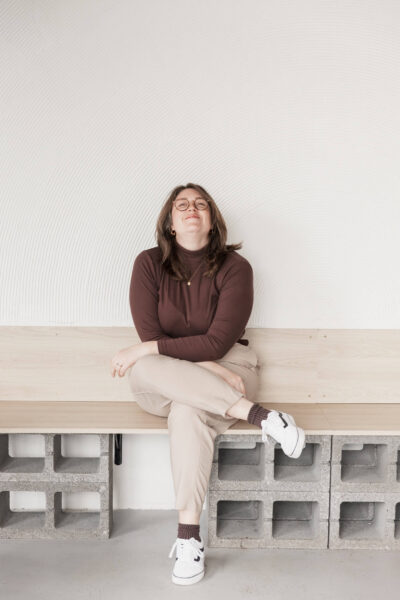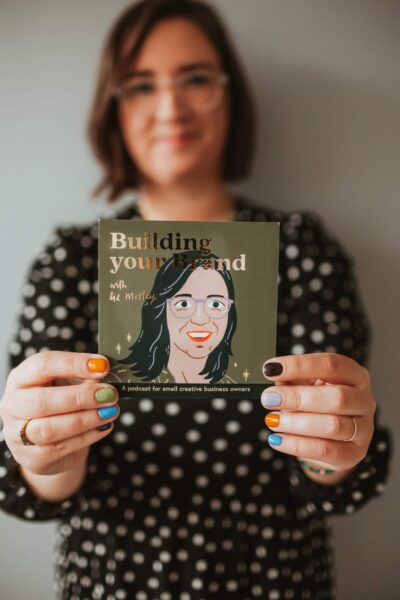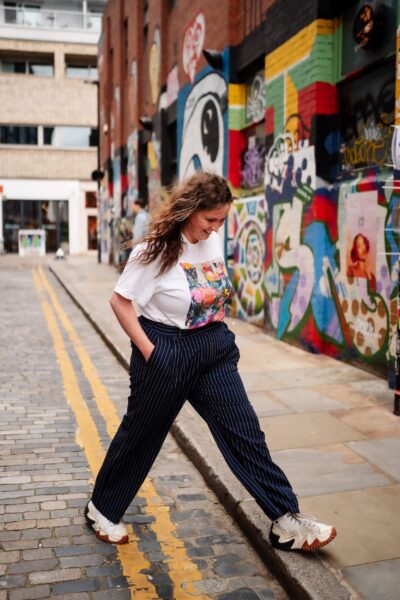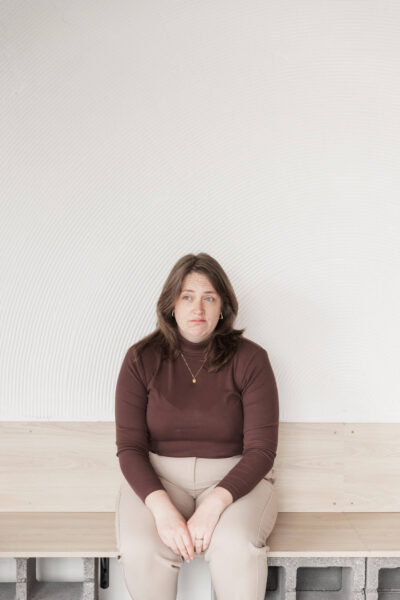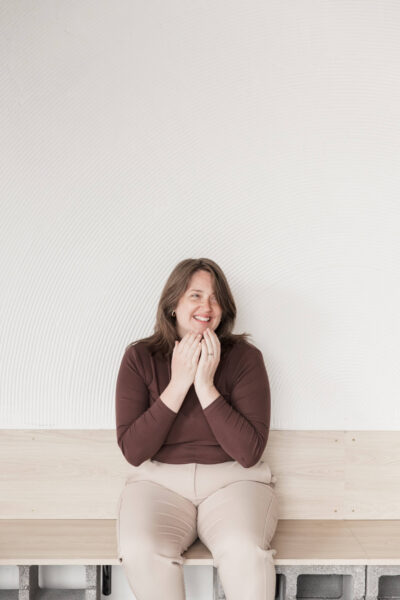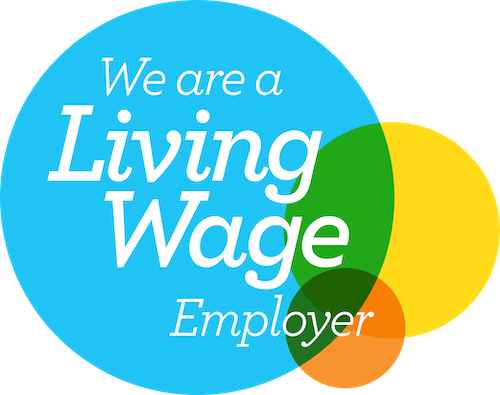We’re back with the second post of our blog series – Website tips for… – in which we take a look at the nuances and applications of good web design practices for specific types of brands, industries, or audiences.
Last time, we gave you some expert tips for design a jewellery website, and now we’ve got some niche tips for all you photographers out there who have websites.
1. Choose a goal: pure portfolio or client enquiries
A website is a business tool. It’s something we create, manage and refine to help us achieve commercial goals, and we judge the success of a website based on how often and how well it achieves those goals.
And whilst it’s possible for a website to have multiple goals, it’s nearly impossible to fully optimise a website for more than one goal at the same time. For this reason, we always recommend that businesses prioritises a primary goal – the main ‘thing’ they want their website to achieve.
To put this into context, an online shop would have the primary goal of generating orders, but maybe a secondary goal of getting people on to a mailing list, and a tertiary goal of getting their audience to read the brand’s blog.
For most photographers, the primary goal of their website tends to fall into one of two categories:
- Show off their portfolio of photography work with a portfolio website
- Generate enquiries for new photography clients with a service website
If you studied photography or art at college/uni in the last 10 years, it’s likely that you were taught how to make a portfolio website to showcase your work – usually on Squarespace – which usually looks like an online digital document with lots of your beautiful photos and very little text.
A portfolio website can be be a suitable business tool if you gain most of your clients/work in-person or through word of mouth. You don’t need to directly speak to the needs of new clients as they already know who you are, or maybe you’re not actively looking for clients at all.
In which case, making your website all about your photography portfolio achieves the goal of allowing you to show off.
A service website instead focuses on addressing what your audience of potential clients need, and position you and your photography service as the solution.
Service websites have the benefits of being generally better for search engine optimisation (SEO) as you’ll have way more content to rank for in Google searches, and a higher chance of turning visits into enquiries too.
Now for a much shorter version of this first point, when it comes to optimising for a website goal…
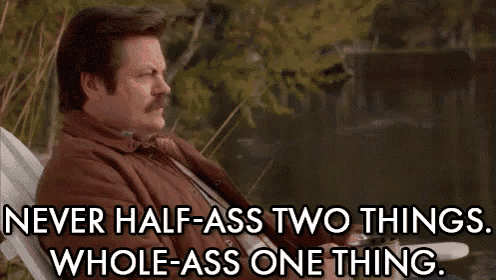
2. Create content for clients, not other photographers
You and your photographer pals know what aperture and depth of field mean, and the difference between a 50mm and 85mm lens, but your clients probably won’t. They’re nuances that your customers won’t necessarily care about or understand.
D’ya know what they probably do care about? How your photos look, where you’re based, who you work with, turnaround time, price, whether your general vibe matches theirs. A website filled with jargon can be off-putting to a client who just wants to know if you’ll put them at ease during a brand photoshoot.
Avoid language that your customers would need to be ‘in the know’ to understand. Expand on terms and explain acronyms where there isn’t a better alternative.
One of the rules of thumb we use at Studio Cotton is to create your content for the person in your audience who knows the least (but make sure the person who knows the most can skip to the enquiry form as soon as they’re ready).
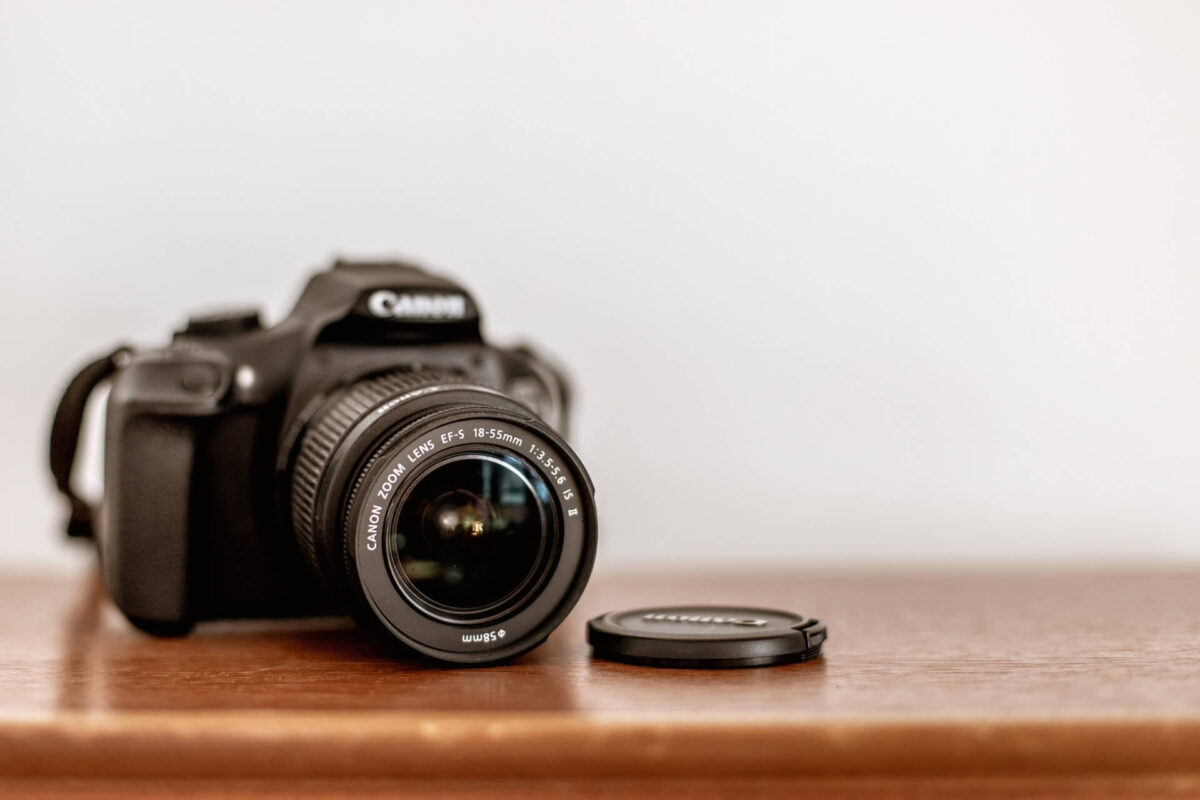
3. Focus on the working process, not just the photos
Your potential photography client has a need – e.g. shooting their Christmas product collection – a need that you and a tonne of your competitors can solve. So how do you stand out?
If you’re thinking “my work will do the talking”, you’re thinking the exact same thing as at least 90% of your competitors. Believe us, at Studio Cotton we’ve worked with more creatives than we can count, and have heard this line about 12,000 times. Roughly.
Chances are that your photos aren’t the only works chatting away to your potential client, but they probably did get your name in the hat. Now we need to make you the easy choice over your competitors – and one of the easiest ways to do this is to describe the specific contents of your service.
To illustrate, let’s say your dream client has narrowed their search down to two photographers, you and Petie’s Pics. Here’s how you describe your package contents on your website:
Your website
- The half day package
- £450
- Up to 30 final images
Petie’s Pics website
- The seasonal shoot
- £500
- Up to 30 final images
- 1-hour style consultation
- Expert briefing questionnaire
- Moodboard & shoot concept
- Art direction
- Prop & backdrop sourcing
- Editing & bonus custom Lightroom preset
- Behind the scenes video
- Gallery of up to 150 images to choose your favourites
- Ability to purchase additional images
- High res, low res and web-optimised files
- 5% off future shoots (12 months)
Petie’s Pics package is just so much easier to buy, even though it is £50 more. It has given the impression that the client gets way way way more for their money – even though I bet that most photographers actually do most of the items on Petie’s list – they just don’t mention it on their website.
Thoughtfully crafted websites for lovely small businesses
Utterly splendid websites designed & built exclusively for small businesses (with all the bells and even more whistles).

4. Be specific with your target audience
When people are looking for the right photographer for them, they’ll often be really specific in their search terms, such as “photographer for jewellery brands,” “candle product photography” and so on.
By naming the projects you’ve already worked on and/or want more of, you’ll rank higher on Google for those terms. Just check out this Instagram post for proof – we ranked super highly for lots of candle-photography-related terms because of a blog post we published about product photography a while back.
We built a website for Weronika, our pal and wonderful photographer, building in multiple pages for the different projects she wants her business to focus on – beauty & skin, jewellery, stationery and homeware.
This specificity is great for SEO, as it’ll help Weronika match the specific search terms and rank highly, because they are (of course) all jam-packed with keywords.
It also really helps to list what photos can be used for, such as selling platforms like Etsy and NOTHS, and social media, both for the keywords and so the customer knows.
5. Publish some pricing on your website
This whole section comes down to one nugget of human behaviour/psychology – the fact that for most people, until we know something is ‘in budget’, the default is to conclude that it’s ‘out of budget’.
In other words, when we don’t know how much something costs, we assume we can’t afford it.
Publicly publishing pricing is weirdly controversial in many industries, including photography and our own industry, web design.
There are many reasons given as to why this essential info is often hidden away: it’s gauche, or nobody else does it, or what if competitors see it, or how can you possibly give pricing when each project is different?
However.
As with most services, getting that glorious go-ahead (or ditching dealbreakers) comes down to two factors: budget and timing.
So by skipping the pricing on your website, you’re not allowing your potential client to tick off that ‘in budget’ checkbox, and vastly reducing the chances of them getting in touch, especially if your competitors have made their pricing easy to access.
That’s why we publish all our web design pricing on our website, as it’s more important to Studio Cotton that we’re giving our potential clients the info they need rather than sticking to industry norms.
In our blog post 8 brilliant UK photographers for your next brand lifestyle shoot, we selected only photographers who published their pricing on their website – click through to see how they do it.

6. Optimise your website images
Of course, as a photographer, you’re going to want to have loads of beautiful examples of your work all over your website. It simply wouldn’t make sense for a photographer to have very few photos on their website.
However, lots of photos on your website can mean a slow load time, which is both bad for SEO and may result in potential (impatient) clients closing the tab before your website has even loaded.
You’ve likely heard us bang on about this one, but please please pleeeeeease optimise your images before uploading them to your website. That basically means making your image files as small as can be, without compromising quality, so that your website loads faster.
We have this £3 super easy tutorial to optimise your images on a Mac, which will save you looooads of time.
PS. This can be a great add-on for your clients too, as we don’t know a single small business that wouldn’t jump at the chance of having web-optimised pics ready to go.
7. Add case studies, not just galleries
Photo galleries are great for showing off your work, but they could work even harder for your photography business by turning them into project case studies.
A case study adds context to your work, and allows potential clients to literally read the value that only you could have added to a photography project. We’re not talking about epic essays, just a few paragraphs that outline who the client is, what they asked for, how you executed the brief, and a clear conclusion.
This article was written waaaay back in 2015, but we still use this structure for case studies because, well, it’s The only online B2B case study template you’ll ever need.
8. Handpick photo highlights (don’t show everything)
Choosing your favourite project photos can be as difficult as choosing your favourite neighbourhood cat (Big Fluffy is so big and fluffy, but Wyndie is everyone’s pal… how am I meant to decide?) but you gotta narrow it down somehow.
It can be really tempting to share 20, 30, 40 or more images from a single project – but this probably won’t help the potential client who your website is designed to seduce. In fact, publishing too many can take your photo galleries from sources of inspiration to dragging distractions and ego-centric albums.
Instead, we recommend sharing the minimum quantity of photos from a project that would give a solid impression of the project – around 6-15 pics.
Approach your project photos like an online shop uses product photography. Each image should serve a purpose – full shots, detail shots, lifestyle shots – and no repetition.
9. Curate projects based on what you want to do next, not what you have done before
If you’re a product photographer who wants to shoot furniture, sharing 5 galleries about your scented candle clients isn’t very helpful.
If you’re a wedding photographer who wants to stretch their creative legs with more avant-garde ceremonies, sharing 7 galleries of traditional village hall weddings isn’t very helpful.
If you’re an event photographer who wants to book more corporate shoots during the week to complement their weekend of rock gigs, sharing 9 galleries of concert photography isn’t very helpful.
Tailoring the showcased projects, galleries and case studies that you publish on your photography website keeps your content directed at the specific audiences you want to impress.
Sometimes that means leaving a project or three you love off of your website – or maybe just saving it for your blog or social media.
10. Edit your testimonials
As a whole, photographers are great at reaching out to clients for testimonials, howeverrrrr as we explained in our blog post 3 compelling qualities of super effective testimonials and how to get them, you gotta tweak ’em a little.
Testimonials should be short ‘n’ snappy, and sing the praises of different aspects to your business – it’s not very helpful to potential clients to read lots of feedback about your photos, but nothing about your communication or inclusivity.

11. Set the expectation of regular photoshoots
Booking a single photoshoot with a new dream client is wonderful, but booking 10 shoots over 4 years with that same dream client is oh-so-much better.
Your website can start seeding the expectation of regular shoots to your potential clients before they’ve even submitted that enquiry form. From multi-shoot packages to offers for returning clients, the odd expectation-setting sentence or section on your photography website can make all the difference.
At Studio Cotton, we burn through photos like nobody’s business, using them on our website, posting them on social media and using them in our blog posts. Ideally, we like to schedule around 3 photoshoots a year (although we haven’t had one since moving into our new office back in December 2022… big sad face).
12. Simplify your enquiry form
As a general rule, the longer your enquiry form, the less likely it is to be filled out and submitted. We’ve done a bit of a deep dive on the topic of form length over on Instagram (which you should totes bookmark).
The primary purpose of an enquiry form is to give your potential client a way to officially register their interest, and to give you, the photographer, the info you need to progress (or reject) the project.
We recommend using as few fields as possible to either progress or reject an enquiry.
For example, asking for your client’s event date or deadline would allow you to reject projects where timings can’t work – so that’s a keeper.
Asking a client for an Pinterest board of their inspo is nice to have, but it’s unlikely to be the field that makes or breaks an enquiry – so we’d sack that one off.
13. Share your email address or alternative contact method
Some potential clients will want to ask a quick question that they can’t find the answer to on your website, and it doesn’t make sense to ask via the enquiry form, so make sure you provide alternative contact details.
The last thing you want is to lose out on a dream photography project because someone isn’t a ‘form person’, or because they just wanted to know if you had a specific piece of equipment they’d need.
At Studio Cotton, we put our contact details all over the place in case someone wants an answer quickly and easily. We provide a phone number and email address in the footer on every single page, as well as on our contact page, about page, and sales pages too.
We’ve also recently updated our contact page to encourage anyone to send us an Instagram DM with quick questions, as social media can be a great solution for casual pre-selling chats.
14. Tell your client what happens next
You wanna be setting expectations the moment a client wants to enquire, whether it takes you a couple of days or a couple of weeks to respond to enquiries – let them know your timeline so that they’re not left in the dark, wondering if they’ve been ghosted.
Use clear communication, and don’t promise a timeline you can’t deliver, just because it sounds better. As long as they have an idea of response time, consultation length, turnaround for photos and anything else, your client is more likely to feel happy and fulfilled. It makes the whole project run more smoothly, with better vibes.
If you found this blog helpful, you might wanna trawl through our blog for more SEO wisdom and website tips, or follow Studio Cotton on Instagram for bitesize chunks of tasty small business website advice.
